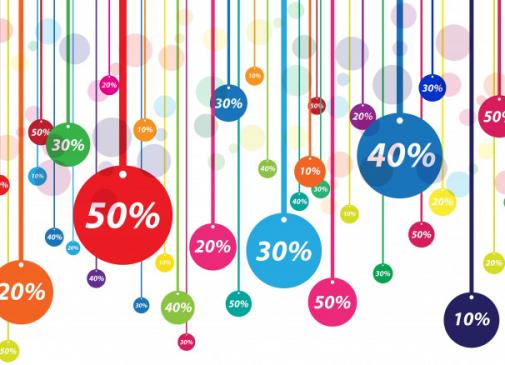It has been 40 years since the industry pundits decided to standardise the bar code in order to improve unique product identification for products crossing a traditional point-of-sale. Back then, placing a unique identifier in a bar code and onto a pack of Wrigley’s gum was a real revolution. Nowadays, it does not cut the mustard anymore.
It has been 40 years since the industry pundits decided to standardise the bar code in order to improve unique product identification for products crossing a traditional point-of-sale. Back then, placing a unique identifier in a bar code and onto a pack of Wrigley’s gum was a real revolution. Nowadays, it does not cut the mustard anymore.
That is why GS1 has been collaborating with a global community to identify the most effective and efficient ways to bring the GS1 Standards to the Web to facilitate product identification, classifications, and descriptions online. This includes GS1 Source, a framework for sharing trusted product information in consumer-facing digital channels, and GTIN on the Web, designed to enable the consistent representation of GS1 keys and attributes in online environments. One of the goals is to enhance online product searchability and visibility. Inspired in its efforts by regional and EU-level regulations, not to mention consumer demand, GS1 believes that data quality will considerably improve in the near future. Customers' reliance on trusted data made available by brand owners and retailers will be growing in the forthcoming years. Furthermore, digital age consumers will also make use of social media, search engines, new applications and solutions get access to more valuable information so that they know better what they really want. In an attempt to find their feet in this new environment, many groups and initiatives across GS1 cooperate on projects such as the Next Generation Product Identification (NGPI) initiative, where industry leaders do their best to determine what the new retail information strategy should be like. If consumers are to be happy and businesses are to prosper, a standardised way to represent product data must be agreed upon, including the entire GS1 System online. Otherwise brand owners and retailers will not take full advantage of improved product visibility and searchability.
Next Generation Product ID paving way to future information strategies
There is no denying that the retail industry has deeply transformed over the years. Nowadays consumers require more digital product information to be linked to the physical products they use and consume across multiple channels. Consumer interaction with products and brands has also changed tremendously. Little wonder that consumer trust and brand recognition are businesses more desirable assets. Moreover, regulators tend to pay more attention to consumer's rights by insisting on greater disclosure and data accuracy. Addressing increasing consumer and regulatory demands, The Consumer Goods Forum has launched the Next Generation Product Identification (NGPI) initiative. The project's main objective is to enable the communication of better quality and unambiguous data. By setting up standards and developing relevant tools and solutions, it will be easier to respond to the information needs of "digital" consumers, regulators and trading partners. Designed to identify new data items that will enhance “package-level” product identification and product information communication, the Consumer and Trading Partner Information Strategy will support new forms of digital commerce as well as regulatory requirements.
EU Food Information Directive in tune with consumer demand for data
The European Union (EU) Food Information Regulation 1169/2011 is a driving force behind a wider, global implementation of GS1 Source and the Global Data Synchronisation Network (GDSN). Entering into force in December 2014, the regulation will require all food products sold online in the EU be accompanied by the identitical product data on the packaging. Retailers already connected to the GDSN will keep on getting trusted product information. Those who do not yet have access to standardised network should consider joining in. An alternative solution includes provision of B2C data via a GS1 Source aggregator, which extends GDSN capabilities, making it possible for product data to be shared with a wider range of constituents online and through mobile applications. One of unquestionable benefits brought to retailers by GDSN and GS1 Source is that they do not need to make regular point-to-point connections. Both solutions enable brand-owners to publish data just once and have it globally accessible to a number of apps and retailers worldwide. Developers of mobile/web applications and retailers can access a large pool of data from one place, trusting it is accurate because it has been authorised by brand owners.
The EU 1169 Directive may seem a relatively recent phenomenon, yet the interest among some European consumers in the origin of the food they purchase has been growing for last couple of years. Regardless of requirements imposed by regulatory bodies, some industry operators have seized the marketing opportunity provided by presenting such information and started to communicate on the origin of their products. Consequently, food labels are full of indications such “made in” or “product of”, not to mention symbols or pictures indirectly pointing to a particular food’s origin. Recent surveys among consumers confirm that demand for origin information on food is strong and as such deserves full consideration. Nearly 70 percent (on average) of consumers in Austria, France, Poland and Sweden consider the origin as an important factor when buying food. A substantial majority of consumers want to know the origin of meat, fish, milk and dairy products, and fruit and vegetables; more than half of them also find it important that the origin of single-ingredient foodstuffs (e.g. sugar, salt, flour) and of coffee/tea is labelled. The survey also reveals that modalities for origin labelling should reflect consumers’ expectations as to what “origin” should refer to on different types of foods (place of provenance/farming vs. country of last substantial processing, farming stage(s) conferring origin, etc.). For processed foods (whether of animal or plant origin), majority of consumers would wish to know both the country of provenance of the primary ingredients (i.e. where the raw materials where farmed) and the country where the food was manufactured. For the sake of consistency and in order to provide consumers with meaningful information, the origin of the primary ingredient(s) of a food should be given at the same geographical level as that indicated for the food itself.
Sources: http://www.gs1.org; http://docshare.beuc.org Photo: http://intouchlabels.com










